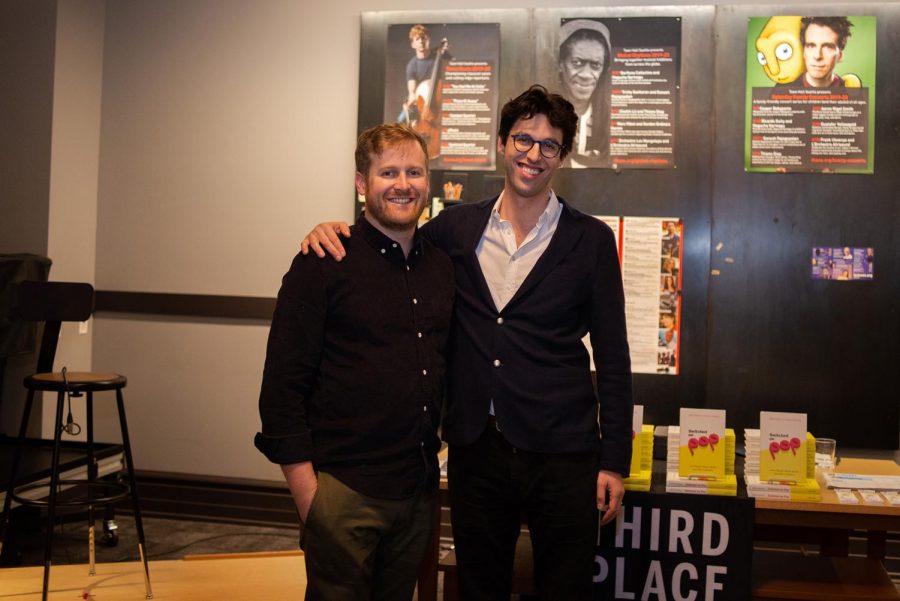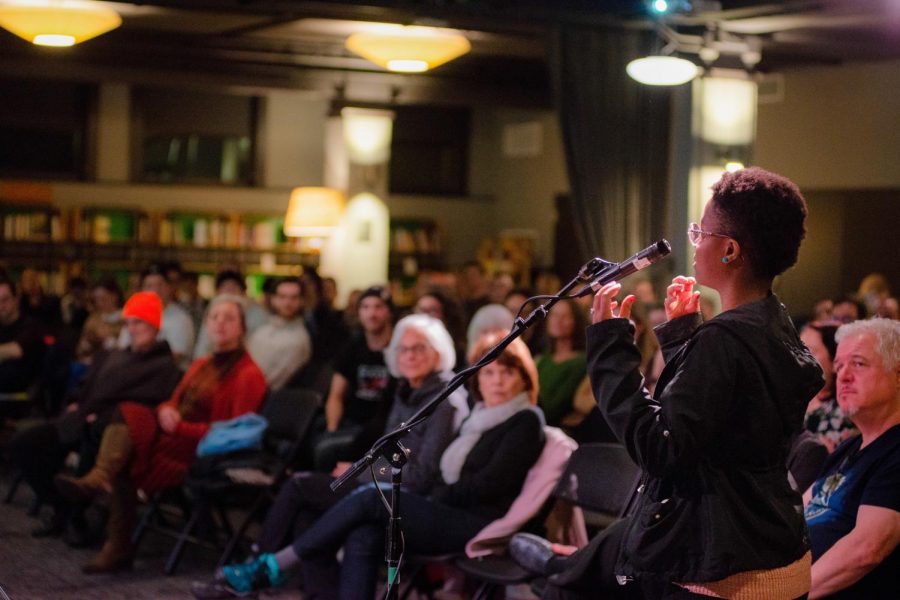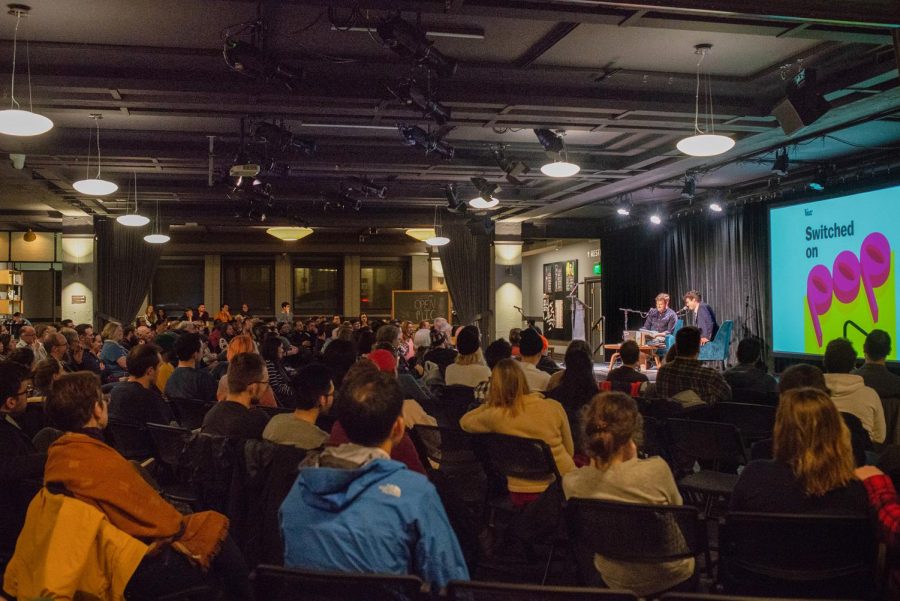Learning How to Analyze Pop Music With “Switched on Pop”
Everyone has an opinion on pop music, even questioning the importance or value of pop music itself. “Switched on Pop” is a book about musical techniques that makes the case for pop music’s relevance.
On Jan. 21, Seattle’s Town Hall hosted an event for the release of the book—which is the cumulation of the podcast—hosted by Charlie Harding and Nate Sloan, of the same name. This event marked the third stop in the “Switched on Pop” book tour. Harding and Sloan analyze the ways in which pop music affects and represents the mood of society and how its artistic expression is just as important as any other genre of music.
Sloan is a musicologist—a person that studies music—and an assistant professor of musicology at the University of South California, and Harding is the executive producer of the podcast, as well as a songwriter and multi-instrumentalist. Together they have been analyzing music on their podcast for the past five years.
At the beginning of the event, they gave some background on the origin of their podcast.
“It was founded on the idea that if you’re only listening to the lyrics, you’re missing at least half of the son,” Harding said. “And so in our show, we try to understand a song by going deeply into its composition and its musical components.”
During the event, Harding and Sloan explained four of their favorite musical concepts: tambre, form, syncopation and counterpoint, which are addressed in their book. Harding and Sloan explained why they chose to write a book based on their popular podcasts.
“We’ve found many of our listeners would ask us where the text is that can help them break down music like we do,” Sloan said.

Similar to their podcast, Harding and Sloan played sound bytes of songs to illustrate the common concepts in pop music. The two choruses in Britney Spears “Oops!… I Did It Again” were used to demonstrate counterpoint, the relationship between the singers voice and the rhythm.
“The [choruses] work perfectly together into the art known as counterpoint, matching up into multiple individual melodies so that they create perfect harmony with one another,” Sloan said.
Other songs that were implemented as soundbytes to demonstrate musical concepts included “Chandelier” by Sia, “Swimming Pools” by Kendrick Lamar and “We Found Love” by Rihanna and Calvin Harris.
The two authors felt that writing the book was a different experience than writing the script for their podcast because the explanations needed to simply communicate the technicality of music is different, especially with a larger audience.
“We learned a lot in the process of writing the book, about how you can communicate technical features of music to a mass audience,” Harding said. “And in doing so, I think, learned to appreciate all over again some of the musical properties of pop songs from the last 20 years.”
Grae Violett, a 17-year-old student looking to join Cornish College of the Arts in the fall, is a volunteer at Town Hall and a self-proclaimed music snob, listening to mostly underground artists. Violett is interested in majoring in music and the event piqued her interest.

“What I learned from this talk is that pop music tackles the same issues that a lot of music does, but the lightness of it, the sort of ‘bubblegum pop’— [pop music] tackles issues, serious issues, but [it] cloaks it in happiness and it makes it a lot more accessible to people,” Violett said.
Harding commented on the deep friendship that has formed between Sloan and himself, doing their podcast for so long and being able to bond over their love of music.The podcast and book have allowed the two to play to their strengths and help each other grow as people.
“In writing the book, it was particularly joyful to get to continue to share our different strengths.” Harding said. “And I think, balance each other’s abilities.”
If you’ve ever been interested in why pop music sounds the way it does, and you want to delve deeper into it, pick up “Switched on Pop,” and for the more auditory learner, there are more than 100 episodes of their podcast.
The Editor may be reached at [email protected]




